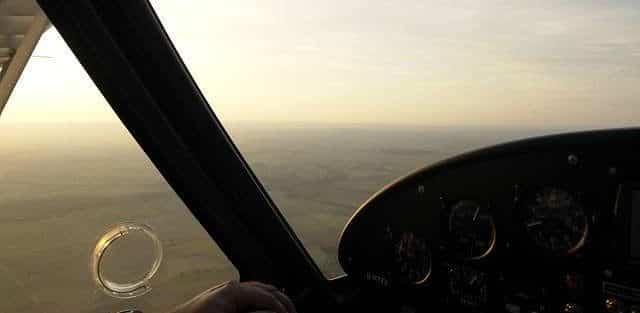Visibility

- Taxiing to and from the runway
- Preparing for takeoff
- Climbing to their assigned flight level
- Approaching and landing on a runway
How Does Visibility Affect Instrument Flight Rules?
Because air charter flights almost exclusively operate using instrument flight rules (IFR), having perfect visibility isn’t necessary to conduct a safe takeoffs and landings. Instead, when visibility is low, pilots rely on the aircraft’s navigation equipment, as well as guidance from air traffic control to do this. However, there are minimum visibility requirements in order for aircraft to safely land using IFR. Visibility is measured in a number of ways. For instance, when pilots are taking off and landing, they utilize runway visible range (RVR). This helps them determine how far they can see down the runway by referencing runway lights or other objects. Other common visibility measurements include: Flight visibility: forward distance a pilot can see from the cockpit. Ground visibility: furthest distance that can by seen from ground level.In aviation, visibility refers to a pilot’s ability to see and identify prominent unlit objects during the day, as well as lit objects of prominence at night. As you can guess, visibility plays an integral part in the safe conduct of air charter flights all around the world.
Visibility is important to all phases of flight, but is of particular importance when aircraft are:
- Taxiing to and from the runway
- Preparing for takeoff
- Climbing to their assigned flight level
- Approaching and landing on a runway
Airport weather stations continually provide updated information on visibility. In the United States is typically measured in statute miles.
How Does Visibility Affect Instrument Flight Rules?
Because air charter flights almost exclusively operate using instrument flight rules (IFR), having perfect visibility isn’t necessary to conduct a safe takeoffs and landings. Instead, when visibility is low, pilots rely on the aircraft’s navigation equipment, as well as guidance from air traffic control to do this. However, there are minimum visibility requirements in order for aircraft to safely land using IFR.
Visibility is measured in a number of ways. For instance, when pilots are taking off and landing, they utilize runway visible range (RVR). This helps them determine how far they can see down the runway by referencing runway lights or other objects.
Other common visibility measurements include:
Flight visibility: forward distance a pilot can see from the cockpit.
Ground visibility: furthest distance that can by seen from ground level.








